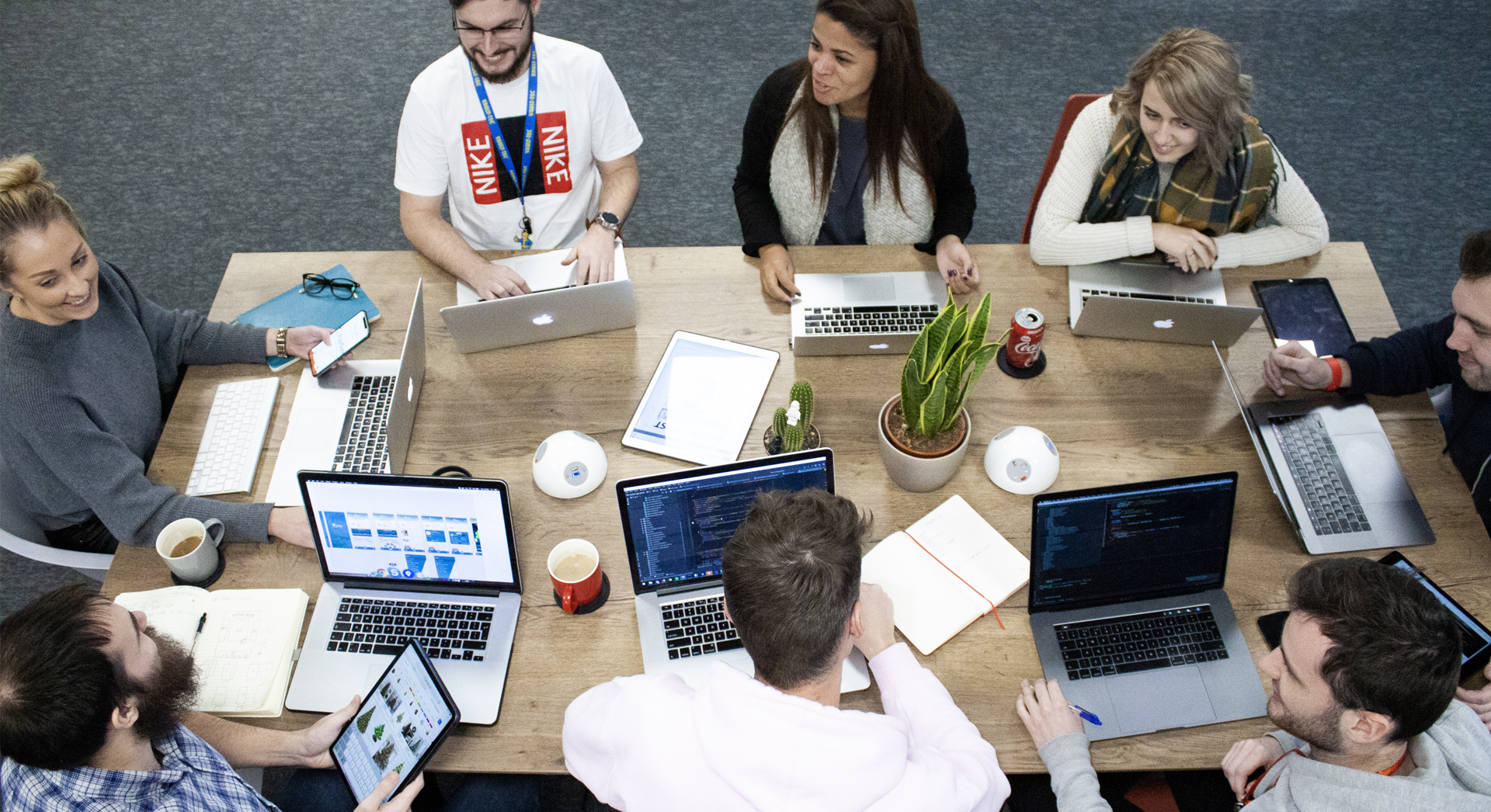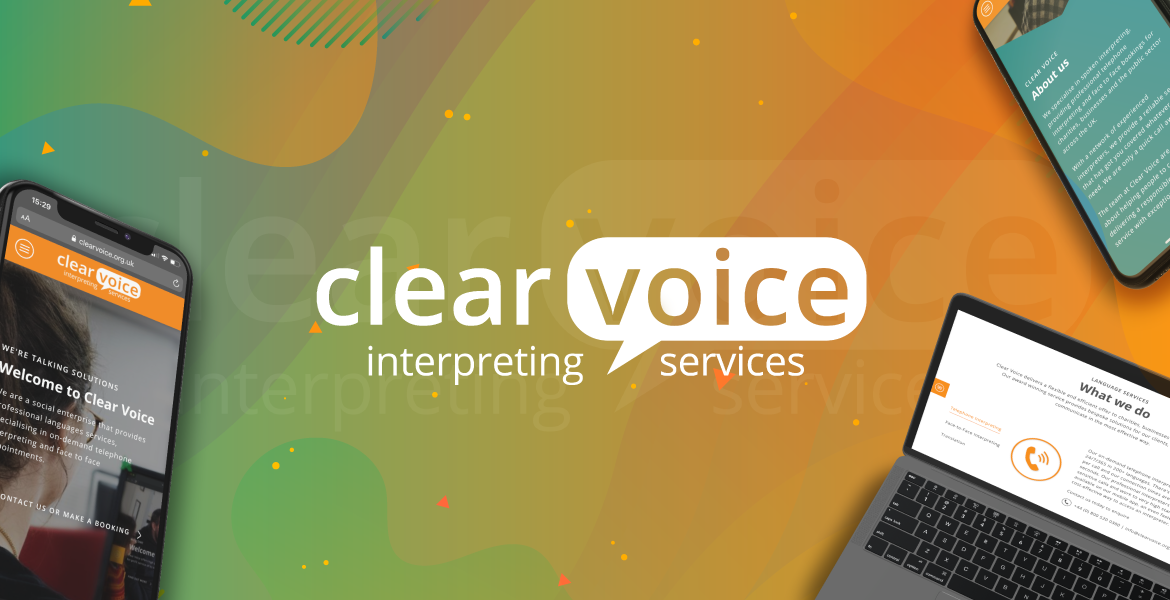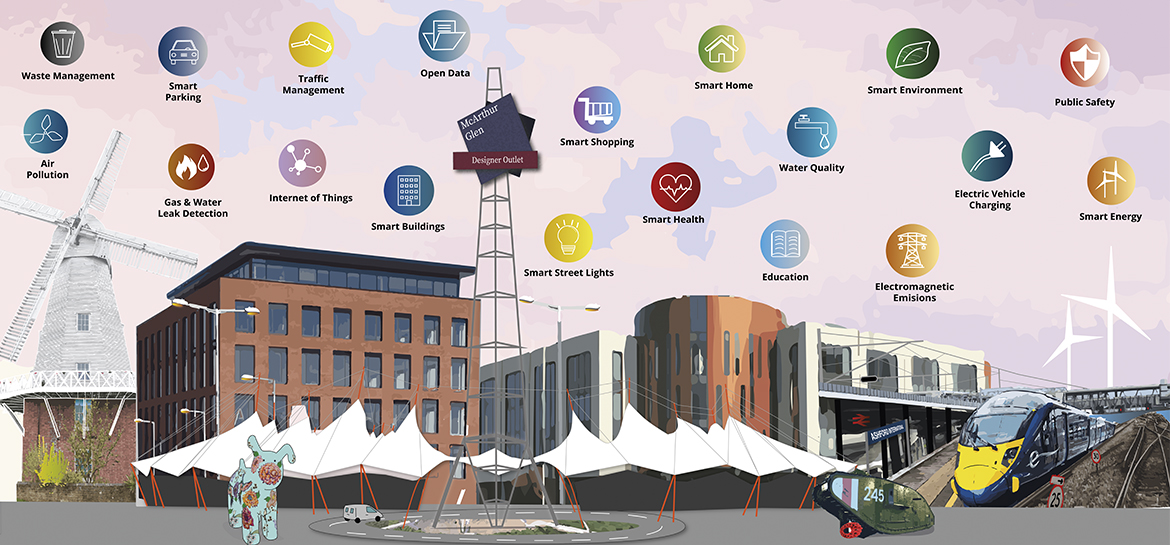What is Smart City Technology? We hear it being talked about in meetings, online and on TV but what is it? The aim of this article is to cut through the jargon and get straight to the bones of an industry with a predicted value expected to reach $2.57 trillion by 2025*. We’ll also cover a few examples of how Smart Cities can improve the lives of the people who inhabit them.
A Smart City is essentially a city (or town!) that has invested in a technological infrastructure to gather and share information. This sometimes takes the form of an application that inhabitants can use to monitor traffic congestion, find local services, find information about local events and book appointments among other things.
Smart Cities use IoT (Internet of Things) sensors and technology to connect components across a city to derive data and improve the lives of citizens and visitors. For example: providing realtime updates of available parking spaces around a city would help to increase footfall by enabling people to plan a visit with confidence. Increasing high street footfall would then provide a boost for the local economy.
Users can also be made aware of road works, road closures and new developments. Enabling local authorities to communicate this information effectively in realtime will help to increase the quality of life for the local community. Enabling local businesses to promote their services and events will help the local economy and hopefully lead to new jobs being created.
Simple enough, right? So what is the Internet of Things? The Internet of Things is defined as “a network of physical devices, vehicles, home appliances, and other items embedded with electronics, software, sensors, actuators, and connectivity which enables these things to connect, collect and exchange data.”**
So how can IoT be used to improve the transportation system? Connected devices attached to local busses could report its location, speed, destination as well as issues with the vehicle.
So how would this work?
1. A device installed on the vehicle would collect data and send it to a centralised or distributed data centre.
2. The data would be delivered to passengers via a public facing application.
3. The data would also delivered to vehicle engineers via a private application.
This would enable passengers to see expected arrival in realtime. Vehicle engineers would also be able to monitor the status of vehicles and react more effectively to issues as they arise.
Collected information could then be used to create more efficient and accurate timetables using Machine Learning but we’ll cover Machine Learning in more depth in another post.
One of the biggest hurdles in delivering Smart City Technology is the cost associated with development and deployment. SixPorts has a small team of highly capable and knowledgeable engineers, developers and designers meaning that we can keep prices low while delivering the best solutions.
If you want to find out how SixPorts can help you implement Smart City Technology please get in touch!
* https://www.grandviewresearch.com/press-release/global-smart-cities-market
** https://en.wikipedia.org/wiki/Internet_of_things


 Custom App Development
Custom App Development Enterprise Apps
Enterprise Apps Progressive Web Apps
Progressive Web Apps Voice Tech
Voice Tech Augmented Reality
Augmented Reality Virtual Reality
Virtual Reality Web Design And Build
Web Design And Build Food And Drink
Food And Drink Retail
Retail Education
Education Legal & Finance
Legal & Finance Government & Councils
Government & Councils Life, Sciences & Health
Life, Sciences & Health Events
Events Lifestyle
Lifestyle Travel
Travel








